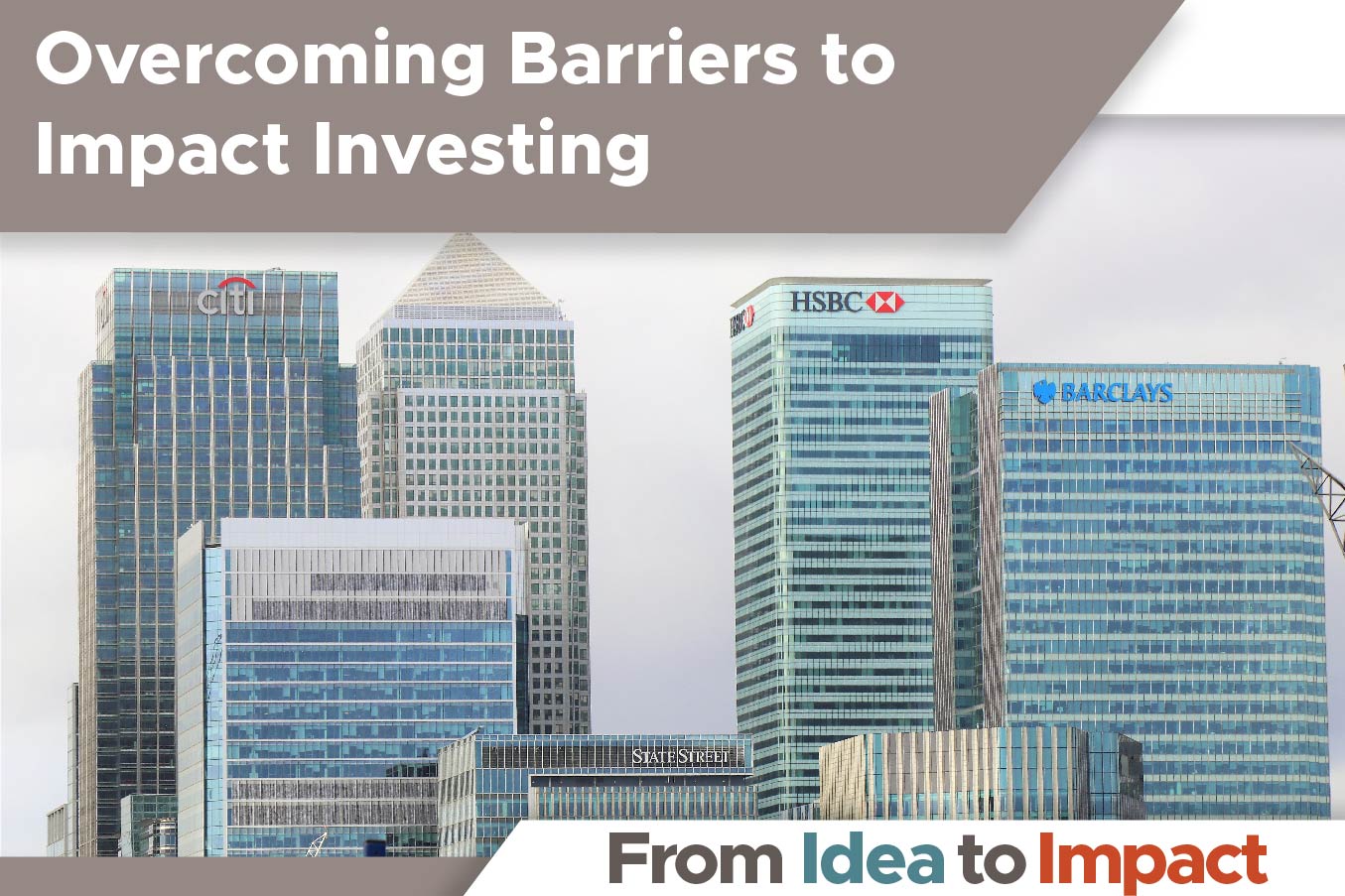Overcoming Barriers to Impact Investing

As we start a new year, I’m feeling inspired to think big and bold. For me, this means exploring how to knock down what stands in the way of widespread impact investing. At Arabella Advisors, we talk to many funders about impact investing. There’s often a ton of enthusiasm, but it doesn’t always translate into action. This is frustrating because impact investing has real power and has been proven to effectively address the urgent issues that funders are working hard to tackle, such as climate change, education, health care, and more.
So how do we move more asset owners (e.g., foundations, high-net-worth individuals) from idea to impact when it comes to impact investing? Decision makers within these institutions who have the power to set investment strategy must have the courage to take a hard look at the excuses and barriers preventing them from pursuing this work and seek and embrace solutions to overcome them.
At Arabella, we help clients meaningfully change their investment behavior, first by identifying the misperceptions that prevent them from acting and then by articulating the steps needed to overcome those hesitations. Below we list the three most common reasons we hear funders give for not pursuing a more holistic impact investing approach—and solutions for overcoming them.
Reason: “We lack internal capacity.”
Solution: It’s true that many organizations do not have in-house capacity for direct due diligence. But philanthropic organizations could easily make impact investments in funds or other ESG-screened public instruments, as these investments do not require complex due diligence. Indeed, the diligence process for such investments is very similar to that of traditional investments. And, there is always a stable of consultants available to help. For example, traditional asset managers are building more and more capacity to invest in ESG and impact investing structures. (See the November 2020 acquisition of Aperio by BlackRock for $1 billion.) If your money manager doesn’t already have that capacity, ask them to develop it. Additionally, the Global Impact Investing Network (GIIN) can answer any questions about the industry, general trends, and important research.
Reason: “There aren’t enough investment opportunities.”
Solution: This was true in the distant past, but decades of philanthropic and concessionary capital have developed great deal flow in the impact investing sector. There are deals in every industry (from clean energy to education), of every structure (from debt to equity to construction finance), and at every stage (from pre-revenue to value investing)—all looking for investment capital. Not sure where to find deals? Peer funders can offer advice. The Heron Foundation describes how it has invested all its assets in impact or ESG investments. There are also programs, such as Arabella’s food-focused investment club, Good Food Ventures, that review hundreds of deals each year.
Reason: “We need to protect financial returns.”
Solution: Without question, impact investments and ESG-screened public equities have the potential to match (or even outperform) traditional market-rate returns. For instance, over the past three to five years, ESG-screened mutual funds have outperformed their traditional peers—mostly a result of being underweight in mixed-performance energy stocks. At this point, institutions should, at the very least, feel empowered to push their wealth advisors or asset managers to share their perspectives on how impact investing could influence their portfolio. If your advisor doesn’t have good information ready at hand, I urge you to ask why—and encourage them to build this expertise into their toolkits and service offerings. The most respected wealth and asset managers (e.g., Cambridge Associates, Goldman Sachs, Jordan Park) all have strong impact investing platforms.
Beyond the above excuses, the other significant factor getting in the way of deeper impact investing adoption is that decision makers tend to behave in established, safe ways. Many fail to change their habits and make the leap to impact investing because current incentives do not encourage change. Often, chief investment and finance officers have been investing for decades with the singular goal of protecting principal and encouraging growth to maximize payout capacity. Any change—for instance, to a more impact-oriented investment philosophy—creates possible liability on those officers if the investments don’t perform well. Meanwhile, continuing to invest in traditional markets allows these same decision makers to attribute poor performance to market conditions, manager selection, or a long list of well-worn excuses and broadly accepted explanations.
So, how can we create new incentives and encourage asset owners to change their behavior and do the morally, financially, operationally, and programmatically optimal thing going forward? Shifting these incentives is, arguably, the most important next step. To take it, we will need to have honest conversations about new incentives for these decision makers, and asset owners will have to make it abundantly clear that the incentives have changed and investment behavior must follow. The excuses are running out—and so is the clock on our ability to solve our biggest challenges.
Cyrus Kharas is a director at Arabella Advisors and co-head of the firm’s impact investing team. He works across a broad range of Arabella’s individual, institutional, and corporate clients, and contributes to the firm’s analysis of trends and opportunities in the impact investing field. He has substantial experience in economics, international development, capital markets, and social impact, and brings this expertise to support projects across Arabella.
